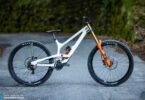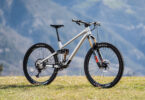Ochain just released a €299 crank spider that claims to give a chainless suspension feel with a chain, reducing pedal kickback and smoothing the ride. Here at ENDURO, we thrive on the dark arts suspension design so had to get one for a test.
In the simplest terms, The new €299 (as tested) Ochain active spider is a replacement crank spider, that instead of being fixed allows a tunable (between 6-12°) rearward rotation between the cranks and the chainring. This rotation of the spider decouples the pedals from the undesirable rearward rotation caused by ‘pedal kickback’ when the bike’s suspension compresses. This means less annoying kicks from the pedals that can spoil the smoothness of the ride. The 7075 T6 Alloy spider weights 128 g and is compatible with 104 mm chainrings, in a 52 mm Boost only chain line. Currently, the Ochain is available in SRAM, RACE FACE and E13 direct mount fitting with Hope on the way.
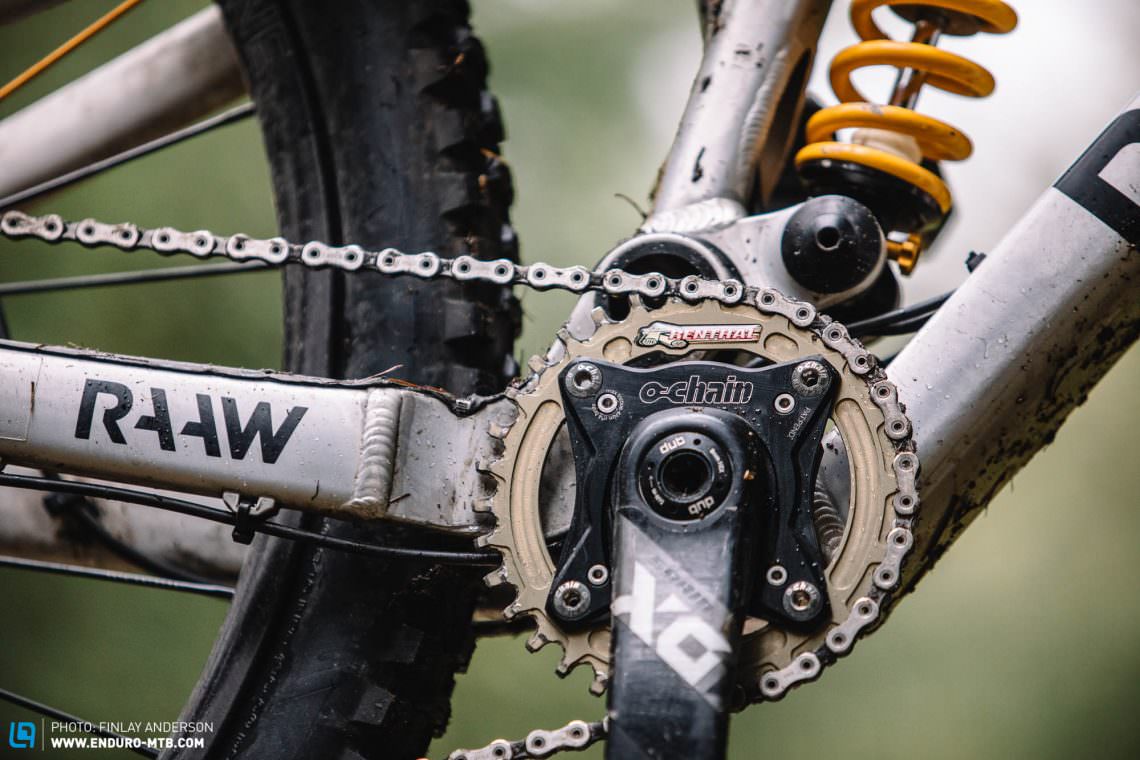
How does Ochain work
When our Ochain arrived, we immediately took it apart. Inside are two floating plates, one connected to the cranks and one connected to the chainring. When rotated forwards, 4 metal teeth in between the plates engage and connect the cranks to the chainring for uninterrupted pedalling. If the chainring is pulled backwards (due to pedal kickback) while the pedals are equally weighted, the Ochain spider allows between 6 and 12° (depending on which elastomers are fitted) of free rearward rotation of the chainring, absorbing the rotation due to chain growth so it’s not felt through the pedals. Internal springs hold the two plates apart when not pedalling and elastomers damp both ends of travel of the device for noise-free operation.



A WARNING: The Ochain is a simple device with a complex explanation, so we’re about to do a deep dive into suspension kinematics. If you have little interest in chain forces and pedal kickback, it’s time to skip right down to the conclusion for the hard-line findings. However, If you want a no-marketing-bullshit explanation, then read on.
In summary (if you don’t want to read all the technical jargon)
In theory,
- Pedal kickback is the undesirable tug backwards on your pedals as your bike moves through its suspension travel
- Pedal kickback is reduced when the bike is coasting fast, and in harder gears (smaller cassette sprockets)
- Ochain should reduce pedal kickback while coasting, but it will be most beneficial at low wheel speeds, slow-speed drops and while the rear wheel is locked.
- Ochain has no impact on anti-squat or climbing efficiency
- Ochain increases the undesirable dead-space in the pedal stroke before the freehub engages
What is pedal kickback?
To understand the potential benefits of Ochain and also to avoid getting caught up in marketing claims, we must first understand the science. Before we start, we must accept that bike suspension is complex and dynamic – the sum of many parts (If you want more details, we’ve created a detailed guide to bike suspension properties). As such, any device that alters chain forces or impacts a suspension property will be more or less effective depending on the bike design, damper, gearing and many other factors. For simplicity’s sake, let’s use the simplest suspension design, as an example, the single pivot. When your bike’s swingarm rotates upwards in response to an impact it rotates around the main pivot point. If the main pivot is centred exactly on the centre of the bottom bracket, as the swingarm rotates upwards the distance between the rear cassette and the chainring remains identical.
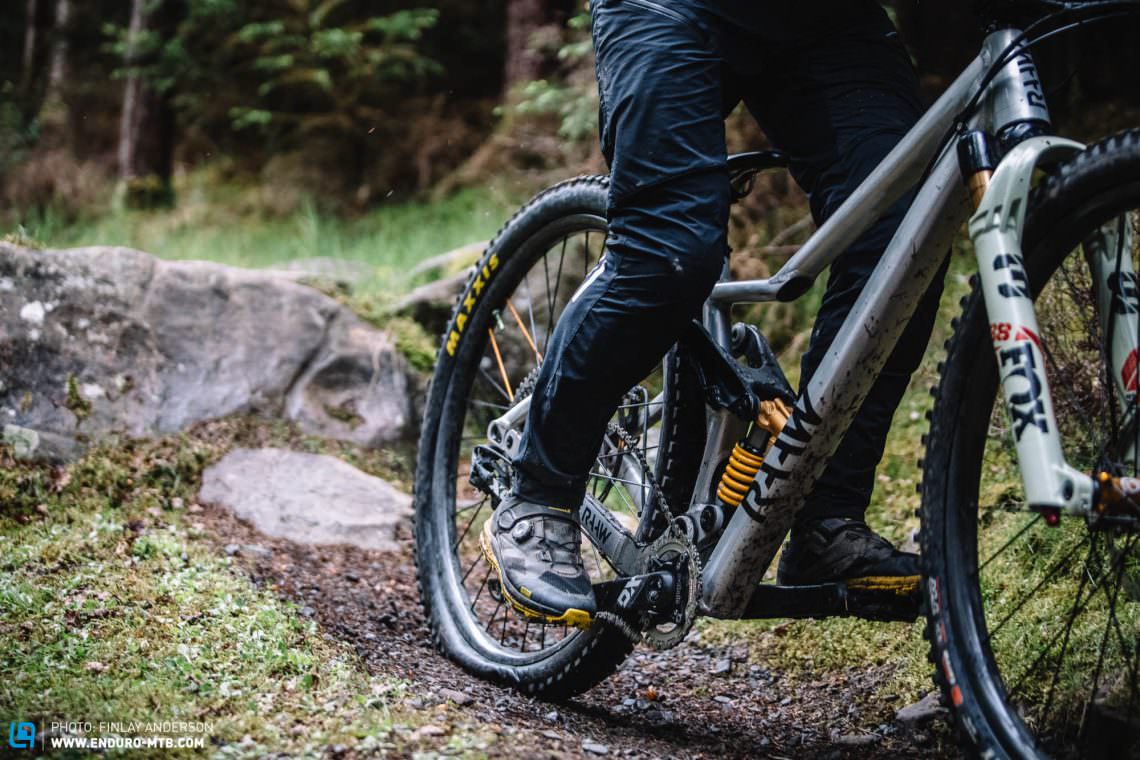
However, as in nearly all cases, if the main pivot is not located directly on the bottom bracket, and the distance between chainring and the cassette changes as the swingarm rotates upwards. In most cases, this distance initially increases and as the cassette and chainring are connected by a chain, causes the chain to be pulled, rotating the chainring and pedals backwards. This results in an undesirable feeling of your pedals being pulled backwards firmly called pedal-kickback. It is important here to note that pedal kickback is only felt when the freehub is engaged, either by pedalling or when coasting and the wheel cannot rotate (e.g. braking). When coasting at speed, the freehub can rotate forward – as the chain forces are pulling on it – to deliver excess chain when needed. Pedal-kickback is measured in degrees of rotation of the crank assembly.
How much pedal kickback does my bike have?
We have so far only used single pivot bikes as an example. Nearly all bike suspension designs suffer from a degree of pedal kickback, some more than others. The amount of pedal kickback your bike has depends on the suspension design, the gear selection and the position of the bike in its travel. Some designs with chain idlers have very low levels of pedal kickback, while designs that are notorious for chain growth such as high-pivot single-pivot bikes can show up to 35° rearward rotation in the 32/50 gear ratio. Pedal kickback is highest in the easiest gears and significantly reduces if you shift towards a smaller sprocket (harder gear) at the back. The now popular small chainring up front and increasingly wide-range-cassette increase your pedal kickback in the easiest gears.
Why do you not get pedal kickback when coasting fast?
It’s a good question, we know that when the suspension compresses chain growth causes the pedals to be pulled backwards. Why then, are our feet not blowing off the pedals each and every time we hit something when coasting down the trail? The answer is the freehub. If the rear wheel is rotating faster than the freehub, the freehub can rotate forward to provide more chain. For example, if the bike is coasting with the rear wheel spinning fast, say at speed x, the freehub body itself is held static by the chain (not rotating). In this scenario, the only way pedal kickback can occur is if the suspension compresses at a sufficient speed to cause chain growth to pull on, and accelerate the freehub to a rotational speed faster than speed x to re-engage the freehub. In summary, the faster you are travelling, the faster the suspension needs to compress for pedal kickback to be felt. This is why your feet are not being tugged by every impact when you are cruising fast down the trail. Also, as already mentioned, pedal kickback is lower in the fastest gears that we normally descend in

So what’s the point of products like the Ochain?
Diving behind Ochain’s #MTBGAMECHANGER marketing, with impressive graphs and charts showing the potential reduction in pedal kickback at different points of bike travel. Their charts are based on the assumption that the rear wheel is not spinning. As soon as the wheel is spinning fast, the rotation of the freehub counters much of the pedal kickback. However, there are situations where the Ochain should have a significant positive effect. When coasting, in big, fast hits, the suspension can move fast enough in an impact to engage the freehub, in this scenario, the Ochain spider should reduce the pedal kickback forces felt by the rider. Where the Ochain will be most beneficial is in situations where the freehub is spinning very slowly and the suspension is moving fast such as low-speed hits or slow-speed flat drops and also when the rear wheel is locked due to braking. In these cases, pedal kickback will be high and (depending on bike design) will result in sharp tugs on the pedals.
Does the Ochain mess with my climbing characteristics / anti-squat?
When the pedals are level and weighted equally, the design of the Ochain uses internal springs to hold the spider to its ‘ready’ position, ready to rotate backwards to reduce kickback forces and isolate chain forces from the crank. However, in some circumstances chain forces can be a positive quality. When you climb for example, most suspension designs engineer in anti-squat, using the chain forces to extend the suspension a little to preserve the bike’s geometry and counter rocking back into the bike’s travel. To preserve the anti-squat of your bike and to maintain efficiency, Ochain is designed to deactivate when you pedal. When you apply pressure to one pedal, the cranks first rotate the Ochain ring forwards between 6, 9 or 12° (depending on setup) before the internal teeth engage connecting the chainring and crank. While you are pedalling, the teeth remain engaged and the Ochain functions as a fixed spider. When you stop pedalling and return to a pedals level position, internal springs disengage the teeth and rotate the Ochain ring anti-clockwise, back into the ‘ready’ position. For those concerned about a soft feeling pedalling against the elastomers, there’s nothing to fear, even with the thickest elastomers fitted there was no softness to the pedal action.
In summary, the Ochain is inactive under pedalling forces, therefore has no impact on anti-squat values. However, Ochain will also not help reduce pedal kickback while pedalling up technical climbs or sprinting through sections.
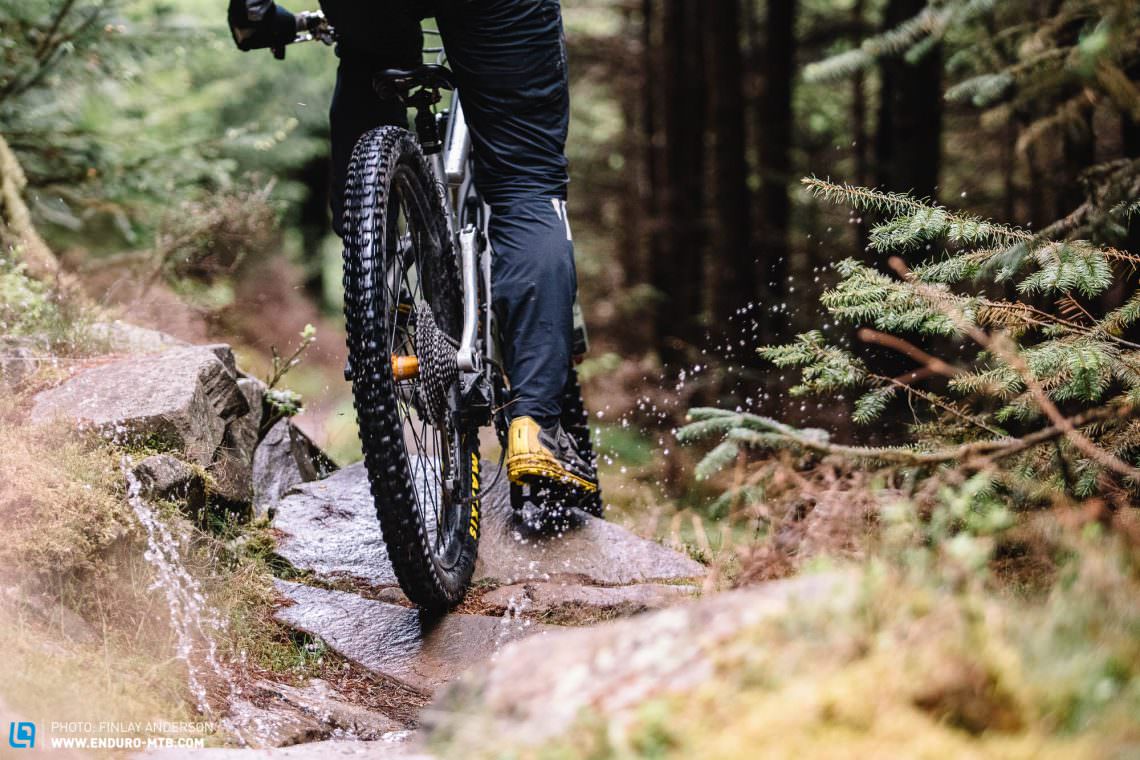
Why is Ochain better than a cheap freehub?
So, if the purpose of Ochain is to allow some rearward rotation of the chainring, and a freehub can also rotate forwards depending on its engagement angle, why not just save €300 and use a basic freehub with a larger engagement angle? While the most expensive freehubs have a 0.5-5° engagement angle (between 0.5-5° are needed to engage the freehub and provide drive), more affordable freehubs with less internal contact points can have 10-20° of engagement angle. Does this mean a cheaper freehub does the same job as Ochain when it comes to reducing pedal kickback? In certain circumstances yes, but there is a very big difference. After each movement, the Ochain spider uses internal springs to rotate the device back into the ‘ready’ position, ready to offer up 6, 9 or 12° of rearward rotation of the chainring. The freehub does not work this way and simply pauses between the engagement teeth. If we imagine a freehub with 15° of engagement, with the pedals in the coating position it may be able to rotate a full 15° before engaging, or just 1° depending on its position between the internal pawls and teeth. In summary, the effect of a freehub on pedal kickback is very complex, and its ability to dispense excess chain to reduce pedal kickback varies in relation to its ever-changing position, the Ochain is designed to always consistently provide up to 6, 9 or 12 ° of rotation between crank-arm and front chainring. If you have a very fast engaging hub, with a low degree of engagement, in theory, the frequency of pedal kickback being felt will be increased. To reduce the impact of the freehub rotation on the testing we chose to test with the fastest freehub on the market, the 0.5° Industry 9 Hydra. Testing with a freehub with a bigger engagement angle would make the Ochain more effective at reducing pedal kickback as the freehub would also (depending on its position) rotate to minimise chain forces.
Can you tune the Ochain?
The OChain comes as standard with 6° of rearward rotation but comes with elastomers to allow 9° or 12* of movement. More rotation means potentially less pedal kickback felt by the rider, but also more pedal stroke dead space. It takes a few minutes to change the elastomers but they can be changed without removing the chainring from the device.

Does the Ochain work? The Ochain review
€300 is not an insignificant sum to invest in your bike’s suspension, so to be considered of good value, the Ochain will have to have observable and significant advantages.
To get a good handle on the Ochain and how it works we put the Ochain to the test in a number of scenarios. Tested back to back with a fixed SRAM direct mount chainring we coasted at different speeds and in different gear ratios through rough rock gardens and root beds, both on and off the brakes. We also threw in some flat and wheelie drops for good measure. The test bike for this was the RAAW Madonna V1, already 18 months in service so the kinematics were very familiar. The RAAW Madonna has moderate chain growth, and in the most extreme case running a small 32T chainring and with the chain on the 50T cassette sprocket, the pedal kickback of the RAAW Madonna V1 ranges from 0 – 22° through the 0 – 160 mm of travel, with 14°’s of kickback between sag (48mm) and 160 mm of travel. We fitted an Industry 9 Hydra rear hub with an industry-leading 0.5° engagement angle to maximise pedal kickback felt in the system and highlight increases in pedal stroke dead space.
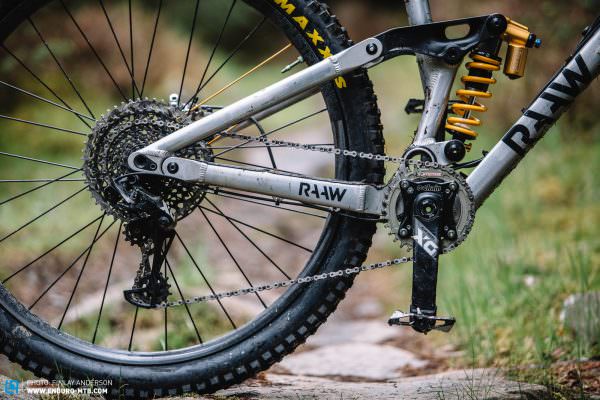
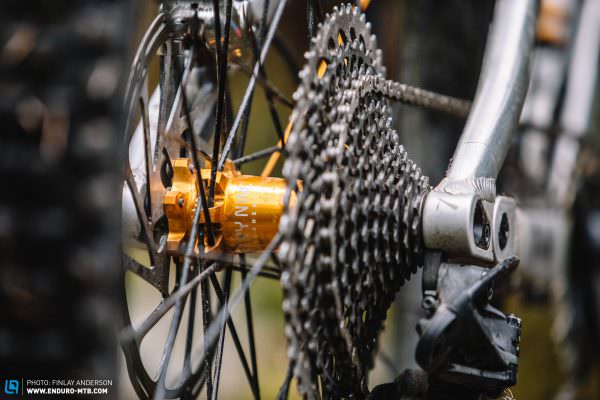
In conclusion, what are the advantages of Ochain?
After extensive testing, one factor was clear. When it comes to reducing pedal kickback, there’s no denying that the Ochain works. Testing back-to-back with Ochain against a fixed spider over rough rock gardens at speeds to induce pedal kickback we found there are significantly less tugs at the pedals in easier gears, 36, 42 and 50 sprockets on the cassette. But, nobody descends in those ratios. In real-world descending gears (10 – 16 teeth on the SRAM Eagle cassette) pedal kickback is naturally much lower and the RAAW Madonna is very smooth without the Ochain, but occasional sharp jolts could be felt on the biggest and fastest hits. After fitting the Ochain with the 12° elastomer, through the same lines at the same speeds, we felt an observable reduction in tugs from the pedals, and the chainring can be visibly seen moving backwards quickly on those same hits that caused kickback with the fixed spider. With the 6° elastomer fitted, as expected the hits were still reduced with only the largest hits being felt through the pedals. However, going faster also reduced the pedal kickback without the Ochain fitted, so results will vary due to wheel speed. The function of the Ochain was most noticeable at low wheel speeds, over low-speed rock gardens and root beds, and especially when hard on the rear brake where the bike would feel smoother with minimal to no pedal kickback. It is also important to remember that whenever there is pedal kickback, those same chain forces are resisting the suspension’s compression during an impact, as such, Ochain will reduce those forces and enable the suspension to move more freely during an impact. On a bike with very high levels of chain growth, this could be a real benefit to suspension forces ar low-wheel speeds.
In summary, in scenarios where pedal kickback is high such as very fast square-edged hits, hard braking and low-speed drops, the bike feels noticeably smoother on the pedals with Ochain fitted. At higher wheel speeds or when pedalling, the function of the Ochain is negligible to none.
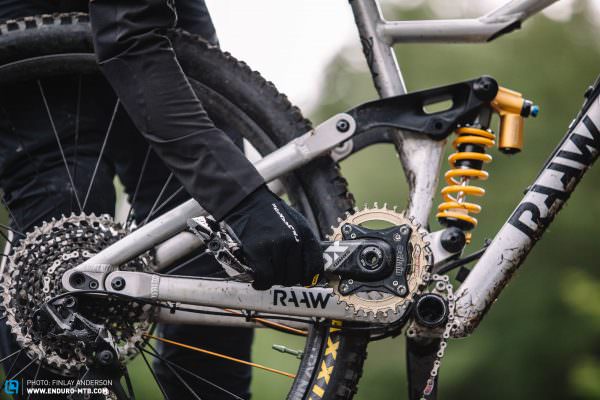
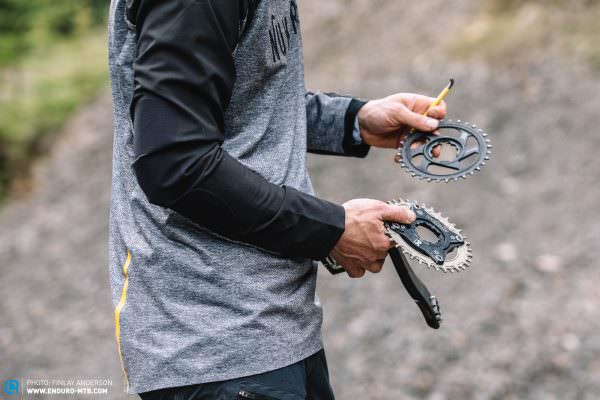

In conclusion, what are the disadvantages of Ochain?
The Ochain improves downhill suspension performance, that’s a fact, but then comes the but, and it’s a big one. As with anything to do with bike suspension, everything is in balance. An advantage in one direction will bring a compromise somewhere else and the Ochain is no different. With the Ochain fitted, the degrees of crank rotation independent of the spider (6, 9 or 12° depending on the elastomers fitted) comes before the rotation needed for freehub engagement, adding to the dead space and reducing the immediacy of your drivetrain. This is worsened depending on the elastomers fitted, from 6° which is not too bad, to 12° which is very noticeable. If you have a slow hub with an engagement of say 10-15°, an additional 12° will make it feel terrible. This additional dead space in the pedal stroke means it’s hard to ‘ratchet’ over technical terrain on add in squirts of power up short technical climbs. Also, it’s very likely that those considering a €300 suspension upgrade will have already upgraded their wheelset, choosing one with a faster-engaging hub for improved power delivery, and an Ochain will negate that advantage. Even with our super-fast Hydra hub, we settled on the smallest 6° elastomer to minimise the additional dead space, prioritising instant power delivery over maximum pedal kickback reduction. The 9 and 12 ° settings would be best kept for DH riders who frequent shuttles or lifts and don’t care about fast power delivery. Pedalling efficiency aside, the Ochain also introduces a moving part that will need servicing in place of a solid part that requires none. Long term testing is needed to determine the longevity of the elastomers.
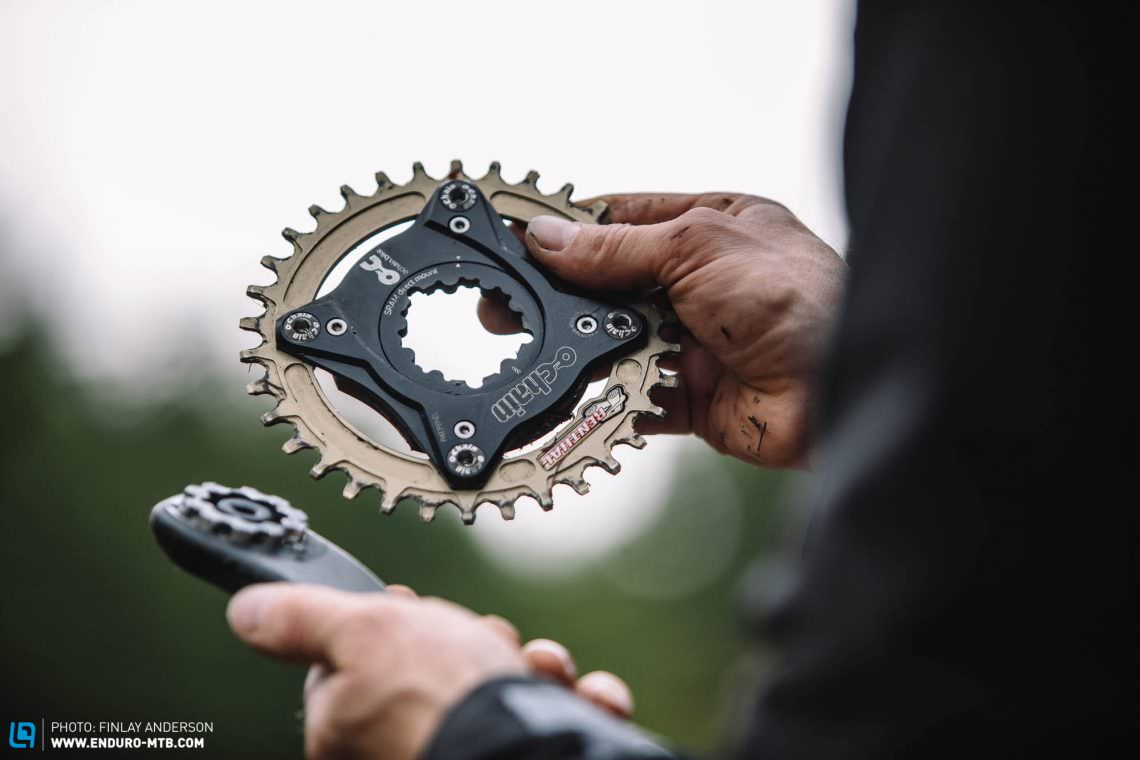
Is Ochain a #GAMECHANGER?
The effectiveness of the Ochain will depend on the design of your bike, gearing, wheel-speed terrain and where you prioritise performance, but is a good (albeit expensive) fix for those who get frustrated by unwanted pedal kickback in low-speed scenarios. On most linkage suspension bike designs, using an Ochain will result in a slight improvement in the smoothness of the ride when coasting at normal speeds down the trail. However, unless you’re having issues with pedal kickback the Ochain needlessly increases pedal stroke dead space and drivetrain complexity. The Ochain will be of most benefit to those looking to solve a problem, for example, those who own bikes with high levels of pedal kickback, or who ride flat pedals on trails that feature big braking bumps and hits. How much it changes the game will depend on your priorities, if you’re looking for maximum suspension performance and are happy with a big trade-off in pedal stroke performance, the Ochain is a very clever solution.
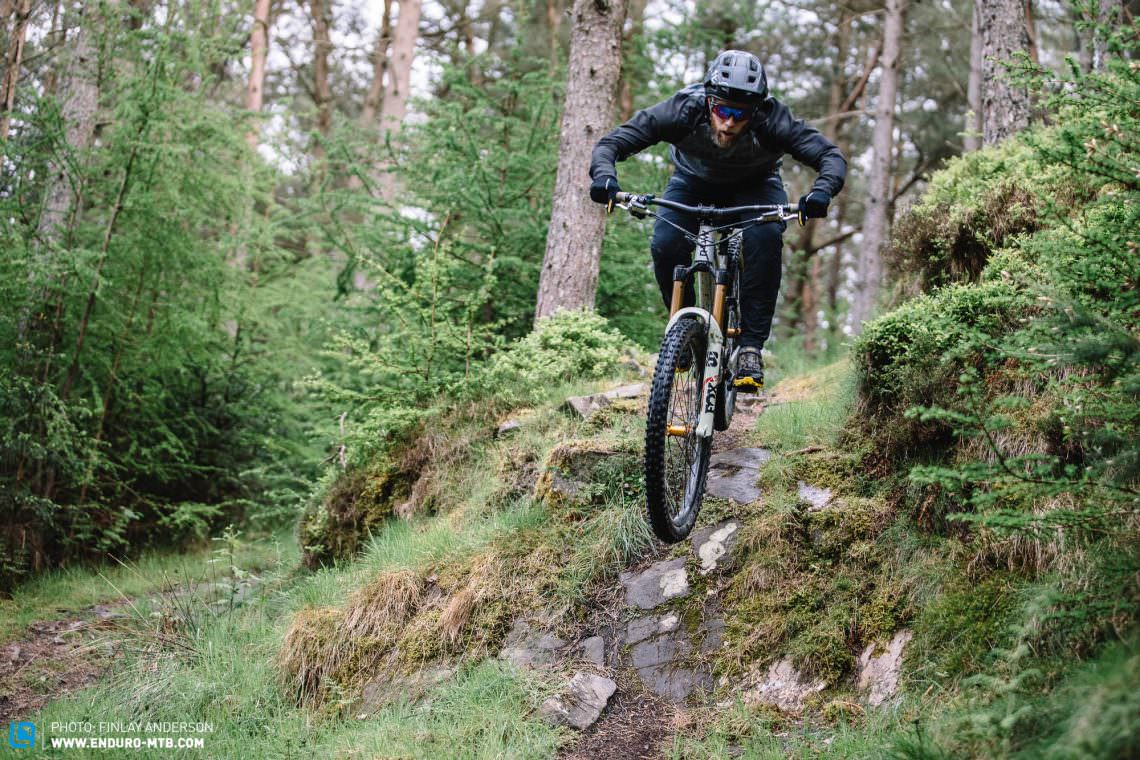
Conclusion
The Ochain active spider works exceptionally at achieving its goal of reducing pedal kickback with noticeably less impacts felt through the pedals in high-kickback scenarios – like under slow-speed drops and hard-braking. However, Ochain significantly increases the pedal engagement angle, so is a product for those focussed only on downhill performance or with bikes with very high levels of kickback.
Tops
- Works very well at reducing pedal kickback
- Good for ‘high pedal kickback’ problem bikes
- Silent in operation
Flops
- Increases complexity of drivetrain
- Increases pedal dead-stroke
- Expensive solution
Did you enjoy this article? If so, we would be stoked if you decide to support us with a monthly contribution. By becoming a supporter of ENDURO, you will help secure a sustainable future for high-quality mountain bike journalism. Click here to learn more.
Words: Photos: Finlay Anderson and Trevor Worsey




